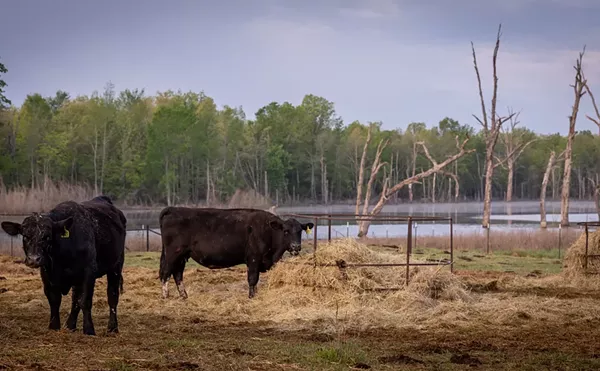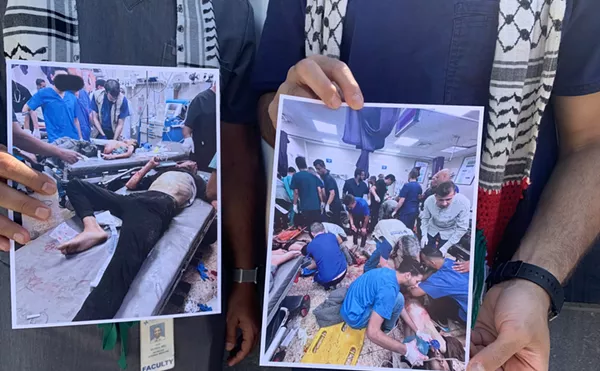All of this is part of something called Heart House, a nonprofit that provides after school and summer programming for refugee, immigrant and under-resourced children.
Shannon Hendricks, executive director of Heart House, said the organization serves grades K–8. “What we focus on initially is their social-emotional health,” Hendricks said. “We know that many of these kids, due to the circumstances of their young lives, have potentially been through trauma or traumatic situations, so we want to help them stabilize mentally.”
They work on mindfulness, emotional regulation and understanding emotions altogether. “You know, what does it mean to be angry?” Hendricks said. “What are some productive ways that you can handle anger?” These are some of the skills the organization tries to teach the kids it serves. “We help them with breathing techniques, understanding how they can do some stress relief on their own,” Hendricks said. “Until those basic needs are met, their academic needs are not going to be met.”
The organization also helps students with homework, and reading and writing activities to help with their literacy. This is supplemented with additional services like yoga and dance classes. All of it is provided by volunteers.
Hendricks said parents come to Heart House often after having trouble finding other means of child care. “There is extremely limited childcare offered in this community because of the structure of this community,” she said. “It’s three square miles of apartment complexes, so there’s just no space for traditional childcare to take place.” That’s where Heart House comes in.
In recent years, it’s been more difficult for Heart House to serve all the people it wants to. This is because the organization has traditionally operated out of apartment complexes. However, during Winter Storm Uri, the city discovered that Heart House didn’t have the specific use permits needed to operate out of apartment complexes so it had to vacate that model. Ever since, the organization has been operating out of shared spaces with schools and other nonprofits in the neighborhood, like the Vickery Meadow Youth Development Foundation facility.“Until those basic needs are met, their academic needs are not going to be met.” – Shannon Hendricks, Heart House
tweet this
The cost involved with the specific use permit process can be prohibitive for Heart House, which is why it hasopted to use shared spaces. “It would have cost thousands of dollars for us to submit the paperwork and manage that process,” Hendricks said.
However, the Dallas City Council recently voted to expand the areas child and adult care facilities could operate by right, meaning without a specific use permit. This expansion included multifamily developments like apartment complexes. “The change in this requirement will allow us to once again expand our program,” she said. “We had to really shrink it, and we could only serve a limited number of children.”
Being able to serve the children at their apartment complex does away with a lot of issues parents may face in getting child care. Transportation is no longer an issue, for example. “We can multiply our model wherever space is available in apartment complexes,” Hendricks said.
These apartment complexes have spaces that can be renovated to accommodate the needs of Heart House’s programming. It could be in the club house of an apartment complex or in renovated units, in partnership with the property owners and management. “The kids come to us,” she said.
The organization was founded in 2000 in an apartment complex. “It was viewed as a space to help keep the kids in this neighborhood safe after school,” Hendricks said. “They could come, get academic support, get emotional support.”
In one complex, the organization had up to eight units and went from serving 40 children to more than 200 in a year.
“It’s fluctuated based on how the community could help support us,” Hendricks said. “Since there is zero to little real estate in this neighborhood, we always had to be creative with location and service delivery models. So, operating out of the apartment complexes is the easiest way to make our programs available to the kids right where they are and eliminate that barrier for families.”
The COVID-19 pandemic provided the organization with a challenge. The organization continued to offer services remotely and helped connect families with internet access. “Our staff stayed committed to working with those families, working with those children in a remote capacity as the whole world did, but our program did not stop because of it,” she said. “I know that many programs had to fold in the face of that adversity. But our staff stayed strong and moved forward and adapted, and we’re very proud of that.”
Another obstacle the staff faces is that the people they serve speak so many different languages. The organization does its best to hire staff that can translate, but that is often difficult.
“We really try to engage with volunteers who speak some of the other languages that we serve so that we can communicate with children in their home language, which is very important whenever possible, but also be able to speak with the families,” Hendricks said. “Being able to communicate with the parents in their home language can be a challenge but we’re navigating that the best that we can with our staff and volunteers.”
Although the organization has a website and social media presence, a lot of people hear about the organization through word of mouth. Some come for services and end up staying to help provide those services to others. One staff member, Community and Family Engagement Coordinator Christelle Agasaro, is a refugee who has two young boys. When she came to the Vickery Meadow neighborhood, she put her boys in the Heart House program and saw how they were able to settle into their new environment. They began making friends and started to flourish. “She became very engaged in the work that we were doing, so much so that we hired her,” Hendricks said. “Now she works with the families.”
Agasaro said she first heard about Heart House through a flyer at the leasing office of the apartment complex where she was staying. She said in the program, kids can be themselves, speak their home language and express themselves freely.
“It was the best thing that could happen to them [her sons],” Agasaro said. “Everything was new for them. Just having a place to go where they can meet other kids, learn how to speak English, connect with people with different backgrounds was really great for them.”
She said she’s proud she joined Heart House. She’s been with the organization for a little over a year. “It’s a great program,” Agasaro said. “I really like seeing the kids who get this opportunity. It’s something I would have wished for as a kid, having a place to belong.”













